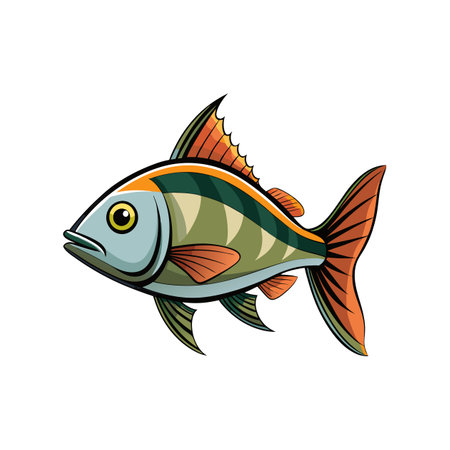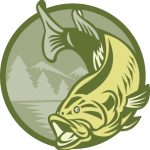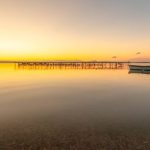1. Reading the Lake: Identifying Key Structures
When youre after trophy fish, understanding lake structures isnt just helpful—its essential. Whether youre bass fishing in Texas or chasing walleye up north, knowing where fish like to hang out will dramatically increase your chances of landing a big one. Let’s break down how to read a lake, both visually and digitally, so you can identify high-percentage spots like drop-offs, ledges, humps, and submerged structures.
Visual Clues Around the Lake
Start by observing the shoreline. Steep banks often continue underwater as drop-offs. Points that extend into the water usually have underwater extensions that attract fish due to changes in depth and structure. Look for:
- Rocky banks: Often indicate submerged rocks and ledges below.
- Vegetation lines: Can signal depth changes or transitions in bottom type.
- Islands or peninsulas: These often have nearby humps or saddles beneath the surface.
Using Digital Tools: Interpreting Lake Maps and Charts
Modern anglers benefit greatly from digital mapping tools like Navionics, Humminbird LakeMaster, or Google Earth overlays. These maps help you find underwater features that are otherwise invisible to the naked eye. Focus on contour lines—they tell you everything about the lake’s layout beneath the surface.
How to Read Contour Lines
| Contour Pattern | What It Indicates | Why It Matters for Fishing |
|---|---|---|
| Tightly packed lines | Steep drop-off or ledge | Trophy fish use these areas for ambush |
| Wider spaced lines | Gradual slope or flat | Good for cruising fish but less cover |
| Circular or oval shapes | Underwater humps or islands | Fish relate to these for feeding and staging |
| Saddle shapes (two humps connected) | Saddle or depression between structures | Trophy fish hold here during transitions |
The Power of Submerged Structures
Docks, old roadbeds, sunken trees, and man-made brush piles also serve as key holding spots for big fish. You can often locate these using sonar or side imaging technology. Pay attention to:
- Hard bottom transitions: Fish love areas where soft mud meets gravel or rock.
- Baitfish presence: If your sonar marks bait schools near structure, its game on.
- Thermocline level: In summer, bigger fish stay just above this cooler layer.
Pro Tip:
If youre using a fish finder with GPS mapping, mark waypoints whenever you locate a productive structure. Over time, youll build a library of high-percentage spots that consistently produce trophy catches across different seasons.
The more time you spend reading the lake—both with your eyes and with digital tools—the better youll get at predicting where those monster fish are hiding. Understanding structure is the first step toward mastering any body of water.
2. Understanding Water Depth and Thermoclines
If you’re aiming to land a trophy bass or walleye, understanding how water depth and temperature layers work is key. Fish don’t just swim around randomly—they follow patterns influenced by their environment. One of the biggest factors? Water depth and something called the thermocline.
What Is a Thermocline?
A thermocline is a distinct layer in the water column where the temperature changes rapidly with depth. In most lakes, especially during summer, water separates into three layers:
| Layer | Description |
|---|---|
| Epilimnion | The top layer; warmest and usually well oxygenated |
| Thermocline (Metalimnion) | The middle layer where temperature drops quickly with depth |
| Hypolimnion | The bottom layer; coldest and may have low oxygen levels |
Why Depth and Temperature Matter to Fish
Fish are cold-blooded, so their activity levels are influenced by water temperature. Many game fish like bass, trout, and walleye prefer specific temperature ranges for feeding. They also need oxygen-rich zones, which often coincide with certain depths depending on the time of year.
General Temperature Preferences for Popular Game Fish
| Fish Species | Preferred Temp Range (°F) |
|---|---|
| Largemouth Bass | 65–75°F |
| Smallmouth Bass | 60–70°F |
| Northern Pike | 55–65°F |
| Walleye | 60–70°F |
| Lakes Trout | 45–55°F |
The Role of Depth Finders and Thermometers
You don’t have to guess where that sweet spot is—tech can help. A quality depth finder or fish finder shows you how deep the water is and often marks fish locations. Many modern units also include water temperature sensors, helping you locate the thermocline quickly.
Tips for Finding the Strike Zone:
- Use your depth finder: Scan different areas of the lake to find drop-offs, underwater humps, or ledges near the thermocline.
- Add a thermometer: Drop it down at intervals to detect when the temperature changes drastically—that’s your thermocline.
- Bait placement: Position your bait just above or within the thermocline where fish are most active.
- Time of year matters: During summer, fish often suspend along the thermocline to stay cool and oxygenated.
Tuning Into Seasonal Shifts
The thermocline isn’t static—it shifts with the seasons. In spring and fall, lakes mix more evenly and the thermocline might not exist. But come summer, its a game-changer for locating feeding fish. Winter also sees stratification in deeper lakes under ice cover, which can influence ice fishing tactics.
The more you understand how water behaves beneath your boat, the better youll be at predicting where trophy fish hang out. Its not just about casting lines—its about reading the lake like a map.
![]()
3. Current, Wind, and Water Movement
Understanding how water moves within a lake is one of the most underrated yet powerful tools for locating trophy fish. Wind and underwater currents play a major role in where baitfish gather—and where game fish follow. By learning to read these natural forces, you can fish smarter, not harder.
How Wind Affects Fish Behavior
Wind pushes surface water across the lake, creating a current that can pile up plankton and small baitfish along windblown shorelines or points. Game fish like bass, walleye, and pike are quick to follow, using the stirred-up conditions to ambush prey more easily.
Key Wind-Driven Fishing Zones
| Wind Direction | Best Fishing Spots | Why It Works |
|---|---|---|
| Toward Shoreline | Windward banks, points, coves | Baitfish get pushed into shallow areas; predators follow |
| Cross-Lake Winds | Main lake humps, mid-lake reefs | Creates consistent currents around structures where fish hold |
| Away From Shoreline | Ledges, drop-offs on calm side | Baitfish scatter; game fish may suspend or become inactive |
The Role of Underwater Currents
Lakes with incoming creeks or rivers often have subtle underwater currents—even in seemingly still water. These currents influence oxygen levels, temperature changes, and food distribution. Fish tend to position themselves facing into the current so food comes directly to them.
Pro Tip:
If youre fishing near a dam, river mouth, or feeder stream, look for eddies and seams where fast-moving water meets slower pockets. Trophy fish love these ambush zones.
Using Water Movement to Your Advantage
- Cast With the Current: Present your lure naturally by casting upstream or upwind and letting it drift into strike zones.
- Target Wind-Stacked Areas: Focus on points and banks receiving direct wind impact—they’re prime real estate for big bites.
- Tune Your Approach: On calm days with little current or wind, slow down your presentation and focus on structure instead of movement.
The next time you hit the lake, don’t just chase shadows or guess where fish might be—use wind direction and water flow as your guides. Understanding how these elements influence bait and predator behavior gives you a serious edge when hunting for those trophy catches.
4. Seasonal Shifts in Lake Dynamics
Understanding how lakes change throughout the year is key to finding fish consistently, especially when youre targeting trophy catches. Different seasons bring different water temperatures, oxygen levels, and baitfish behavior—all of which affect where game fish hang out and how active they are. Let’s break down how each season impacts fish location and movement so you can stay one step ahead.
Spring: Pre-Spawn and Spawn
As the water warms up in early spring, fish begin moving from deeper wintering holes toward shallower areas to prepare for spawning. This transition makes them more accessible but also more sensitive to weather changes.
Key Features:
- Water Temp: 50–65°F
- Fish Location: Transition zones like secondary points, creek channels, and flats near spawning coves
- Best Techniques: Slow-moving soft plastics, jigs, suspending jerkbaits
Summer: Post-Spawn to Peak Heat
Once spawning wraps up and temperatures rise, fish tend to move back into deeper, cooler water. Oxygen levels drop in certain layers of the lake, pushing fish to specific depths where conditions are more stable.
Key Features:
- Water Temp: 70–85°F+
- Fish Location: Offshore humps, ledges, submerged roadbeds, and thermocline edges
- Best Techniques: Deep-diving crankbaits, Carolina rigs, drop shots
Fall: Feeding Frenzy
As the water cools down again, baitfish move shallow—and predators follow. This is a great time for aggressive bites as fish bulk up before winter.
Key Features:
- Water Temp: 50–70°F
- Fish Location: Creek arms, backs of coves, shallow flats with baitfish activity
- Best Techniques: Spinnerbaits, lipless crankbaits, topwater lures
Winter: Deep and Slow
The coldest months push most fish into deeper water where the temperature is more stable. They’re less active but still catchable if you slow your presentation way down.
Key Features:
- Water Temp: Below 45°F
- Fish Location: Deep structure like channel bends, vertical drops, and main lake points
- Best Techniques: Jigging spoons, blade baits, tight-line finesse tactics
Quick Reference Table: Seasonal Fish Behavior
| Season | Main Fish Locations | Water Temp (°F) | Go-To Lures/Techniques |
|---|---|---|---|
| Spring (Pre-Spawn) | Coves, secondary points | 50–65°F | Suspend jerkbaits, jigs |
| Summer (Post-Spawn) | Ledges, humps, thermocline edges | 70–85°F+ | Deep cranks, Carolina rigs |
| Fall (Feeding Up) | Bait-rich shallow flats & creeks | 50–70°F | Lipless cranks, spinnerbaits |
| Winter (Slow Bite) | Main lake deep structures | <45°F | Spoons, finesse jigs |
The more you tune into these seasonal patterns and adjust your approach accordingly, the better your chances of hooking into that trophy bass or walleye. Fish don’t disappear—they just relocate based on comfort zones and food availability.
5. Matching Fishing Techniques to Structure
Understanding lake structures is only half the battle—knowing how to fish them makes all the difference. Different underwater features call for specific tactics and gear. When you match your technique to the structure, youre not just casting randomly; youre targeting high-probability strike zones that big fish love.
Why Structure-Specific Tactics Matter
Fish use underwater structures like points, ledges, humps, and drop-offs as highways, feeding grounds, or ambush points. By tailoring your approach to each structure type, you’re speaking their language—and increasing your chances of landing a trophy catch.
Go-To Tactics for Common Lake Structures
Here’s a quick guide to pairing structure types with effective lures and techniques:
| Structure Type | Recommended Technique | Best Lures/Tackle |
|---|---|---|
| Points | Fan-casting over the points tip and sides | Crankbaits, spinnerbaits |
| Ledges | Slow vertical presentation along drop-offs | Jigs, Texas-rigged soft plastics |
| Humps | Casting across and working lures up the rise | Carolina rigs, lipless crankbaits |
| Flats near deep water | Covering ground with moving baits | Chatterbaits, swimbaits |
| Submerged timber or brush piles | Pitching or flipping directly into cover | Punch rigs, weedless jigs |
| Rocky shorelines or riprap banks | Bounce lures along bottom contours | Craw-pattern crankbaits, football jigs |
Tuning Your Presentation for Maximum Effectiveness
The key isn’t just lure choice—it’s how you present it. For example, when fishing a ledge, a slow jigging motion lets your bait mimic injured prey sliding down the drop-off. On points, burning a crankbait across the shallows then letting it dive mimics baitfish fleeing predators.
Quick Tips:
- Use electronics: Sonar can help pinpoint exact structure edges and bait schools.
- Match depth: Use weighted rigs or diving baits that reach where the fish are holding.
- Adjust retrieve speed: Faster in warmer water, slower in cooler temps or pressured lakes.
The Bottom Line on Structure-Based Fishing Techniques
If you want consistent success chasing trophy bass or walleye, don’t just follow the crowd. Fish smart by understanding what lies beneath the surface and matching your technique to it. It’s all about fishing with intention—not just hope.


